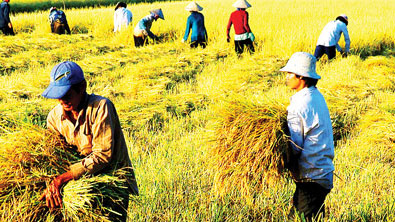It’s time to rethink Vietnam’s agriculture system
(VOV) - A workshop bringing together several hundred of the smartest and most innovative minds in agriculture recently convened in Hanoi to tackle the tough issues surrounding sustainability.
“I feel impatient with agriculture at this juncture,” said Chairman Dr Nguyen Quoc Vong from RMIT University, because the industry in Vietnam today is still plagued by decades old problems.
Since Vietnam’s accession to the World Trade Organization (WTO) in 2006 a sweeping effort to transform farming methods and improve staple crops has helped to quadruple food production.
Vietnam’s agriculture is one of the largest producers of fruits and vegetables around the globe with exports having hit US$30 billion last year, he said. “Yet due to poor handling, post-harvest losses were excessively high.”
In addition, the profits on agricultural commodities remains low with the cost of agricultural inputs having increased faster than the value of outputs and as a result farmers are worse off today, even after taking into account the increase in productivity.
In this era of tougher competition brought about by the ASEAN Economic Community (AEC) and other free trade agreements it’s time for the nation to rethink its overall strategy towards agriculture.
“Most notably, the commitment of the farmers and others within the industry to producing a quality product just isn’t there,” underscored Vong.
“Vietnam rice quality is inferior to Thai rice, Philippine bananas are more eye-catching and better preserved, the quality of Indonesian watermelon, coffee and cocoa is higher and Japanese seed is just plain better.”
 |
As a result, businesses face insurmountable challenges attempting to tap into new markets because they are mainly exporting raw commodities with little to no added value— incapable of assuming a dominant role in today’s global marketplaces.
The lack of emphasis on quality not only hampers expansion into new markets but has taken its toll on traditional markets as the nation’s farmers continue to lose market share Vong stressed.
“In 2012 Vietnam rice exports accounted for a 65% market share in China, whereas today the market share has dropped to only 47% to the benefit of Myanmar and Thailand who have made advances in the market.”
Vietnam has had to share the Philippine market with rival Thailand instead of monopolizing rice supply via Government to Government contracts as historically has been the case.
Lastly, Vietnamese agriculture has failed to make the transition to large scale production that can benefit from economies of scale and remains largely characterized by inefficient smallholders Vong said.
Associate Professor Ho Thanh Phong, a principle of the International University in turn picked up on Vong’s point on post-harvest losses and introduced a survey that showed those losses are excessively high.
Large scale operations are inherently more efficient as they benefit from investing in costly handling machinery and high-tech postharvest equipment and other technology that are not feasible for small-scale farms.
Phong pointed out the application of advanced science and technology to lengthen the preservation and storage time for farm produce and increasing the diversity of products are key solutions for the industry.
“The lack of an established value chain in agriculture moving products from the farm to the final consumer is the number one problem the industry faces,” said Chair Vu Kim Hanh of the High Quality Vietnamese Goods Association.
Production is simply uncoordinated, haphazard and out of sync. She proposed the development of sophisticated distribution channels bridging the movement of farm products through agriculture cooperatives.
Lastly, Associate Professor Vo Thi Thanh Loc from Can Tho University suggested tackling agriculture problems by moving to larger scale farms, better post-harvest methods and development of more added value products.
